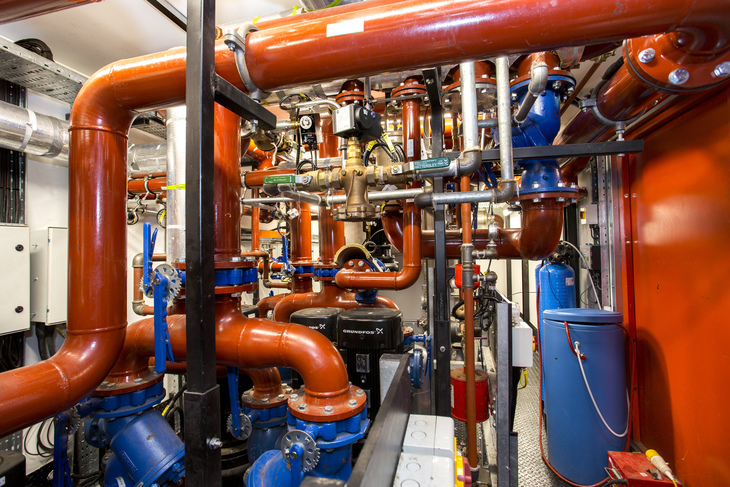For more transport chat, join our popular Facebook group, Londonist Roundel Ramblings.

When riding the tube in summer, the eternal words of Mark Corrigan come to mind: "It's too hot. It's too bloody hot! It's ruining everything. Tell it to stop!" But what if that heat wasn't 'stopped' and instead it could be repurposed.
That's what the new joint scheme from Islington Council and Transport for London will do. Bunhill 2 Energy Centre harnesses waste heat from the tube tunnels below, and is capable of turning that into hot water and heating for more than 550 homes and a school. This will reduce heating bills connected to the network by 10%.
Technology that reuses waste heat is not new, but this project is the first in the world that specifically takes the waste heat from a metro system (of which there is an abundance). It's made possible because this site was once a tube station: City Road. It was on the Northern line, between Angel and Old Street, but has been closed due to lack of use since 1922.

How does it work? Well, there's a massive underground fan that extracts warm air from the Northern line tunnels beneath. That air travels over a series of water filled pipes, heating the liquid inside. The water is then warmed to 80℃ using heat pumps, before it travels around a series of underground pipes and is transferred to communal heating system loops.
If you want that information digested into a more adorable version, here are the kids from Moreland Primary School (the school that's connected to the network), explaining it.
However, the project doesn't just repurpose heat. Using combined heat and power technology it also generates (greener and cheaper) electricity, that's fed into a nearby tower block and the London Underground beneath. There's also the possibility of selling some of this power off to the National Grid to generate income.

In our current age when sustainability and climate change are such a hot topic, this project can only be seen as a positive development. It will reduce CO₂ emissions by roughly 500 tonnes each year, helping Islington council towards its goal of making the borough carbon neutral by 2030 (which is also the Mayor's target for city-wide carbon neutrality).
Going back to the Peep Show quote we opened with, Bunhill 2 Energy Centre can also help with 'stopping' the heat on the tube. Well, not stopping exactly, but cooling the network when it overheats, as the fan in the ventilation shaft that usually blows the hot air out can act in reverse, and suck cooler air in during the summer months. As all Northern line commuters will agree, anything that could cool the carriages down in summer needs to be applauded.

As the project has so many benefits — reducing carbon emissions, cooling the Underground network, generating income through electricity sales — TfL has greenlit a feasibility study to see if it could be replicated elsewhere. The study is looking at 56 sites: disused stations and ventilation shafts across its network. Six key sites have been identified, one of which is York Road Station (sorry to those who'd like to see it reopened) between King's Cross and Caledonian Road.
Councillor Rowena Champion, Islington Council's Executive Member for Environment and Transport, said:
This pioneering project recycles heat that was simply being lost to the environment. We are cutting carbon emissions in a way that also reduces people's energy bills, helping us to help them at a time when the cost of living is soaring.




